Life on wheels: The campervan trend is rolling across Malaysia as Singaporeans hop onboard
The country’s RV industry is beginning to take off while interest from Singaporeans grows.
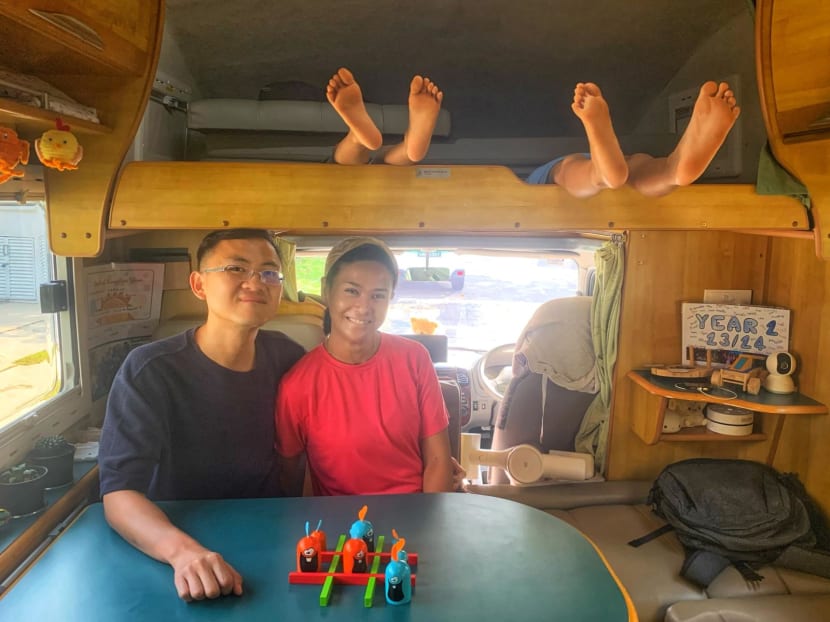
David Ang and Estelle Toh, with their sons Aether and Zephyr, in their campervan. (Photo: David Ngiau)

This audio is generated by an AI tool.
When they became parents, David Ang and Estelle Toh wanted to ensure that their two sons had a bond with nature.
Ang, a 36-year-old Singaporean doctor, always loved the outdoors while Toh, a 41-year-old nurse he met through work, grew up in the picturesque west Johor village of Ulu Choh before going to school in Singapore and starting her career.
They named their sons Zephyr and Aether, now six and eight, respectively.
The young Singapore-based family tasted “van life” when they toured New Zealand in an RV – or recreational vehicle – in 2018, and the experience stuck with them. Then the COVID-19 pandemic struck, leaving them feeling a little trapped.
Three months after the Causeway reopened in April 2022, the family moved to East Ledang, a Johor neighbourhood near Legoland popular with Singaporeans and other expats, to enrol their sons in an international school nearby. The exchange rate would allow the young family greater latitude while Ang would still work at a Singapore clinic three days a week.
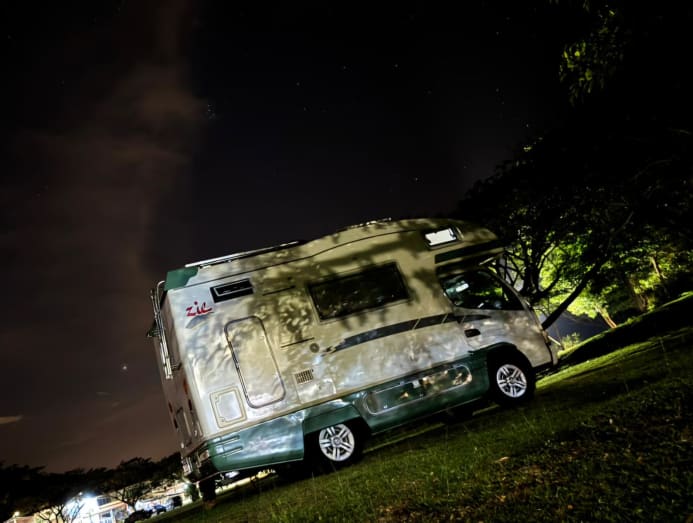
Noticing RVs rolling about west JB, and with their fond RV memories, the couple thought: Why not get a campervan of our own?
A few months later, buoyed by the fact they’re living in a land with broader horizons, they bought a parallel import Toyota Camroad from Japan from a Johor-based dealer.
“We do a lot of road trips around Malaysia and always look forward to the next one,” said the 36-year-old Ang. “We found that besides hotels and resorts, it was easy to get affordable Airbnbs but they weren’t always ideal for us. An RV would be more secure, we wouldn’t be restricted to staying in small towns, and could visit more heritage sites too.”
With RVs not allowed on Singapore roads, Ang and Toh are part of a wave of Singaporeans buying campervans and parking them in Johor. RV love is growing fast among Malaysians, too, with one Facebook group of enthusiasts having 113,000 members as of writing.
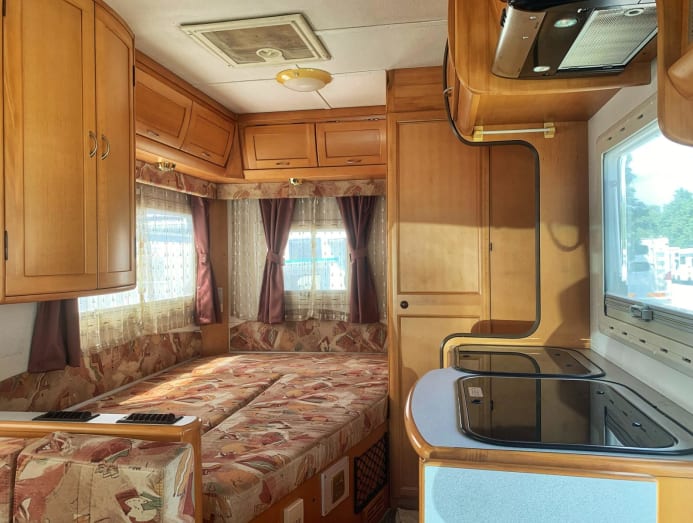
GROWING BUSINESS INTEREST
For Shamsul Rosli, the idea of a home-on-wheels was irresistible. Peering and pondering led to planning and plotting and, over a decade ago, the Seremban-based outdoor events producer flew to Europe with his wife and rented an RV, also known as a motor home, campervan, or caravan.
He was instantly hooked.
In 2018, the 60-year-old imported one to Malaysia and began touring the country and Thailand. The obsession grew and he set up Camper-V in 2021 to convert vehicles (such as buses, vans and trucks) into RVs. COVID-19 restrictions on hotel stays provided an unexpected boost as Malaysians started looking at the growing number of RVs rolling through quiet kampung lanes as an alternative.
Today, Sham is one of the leading figures in the country’s growing campervan scene, promoting a culture that taps into Malaysians’ existing love for the outdoors and working with government agencies to set up supporting infrastructure for a fast-growing industry. Numerous dealers started appearing around the same time Sham imported his RV while individual enthusiasts started DIY conversions of vans into campervans.
Sam Tee, founder of VR Motorhomes near Subang Jaya, participated in PLANMalaysia meetings along with other industry players and is encouraged by the government’s growing support for the sector.
Tee started VR Motorhomes in 2019 with his wife after importing his first RV. Seeing the potential of RVs, he quickly transitioned away from sales and distribution of lorries and other heavy vehicles.
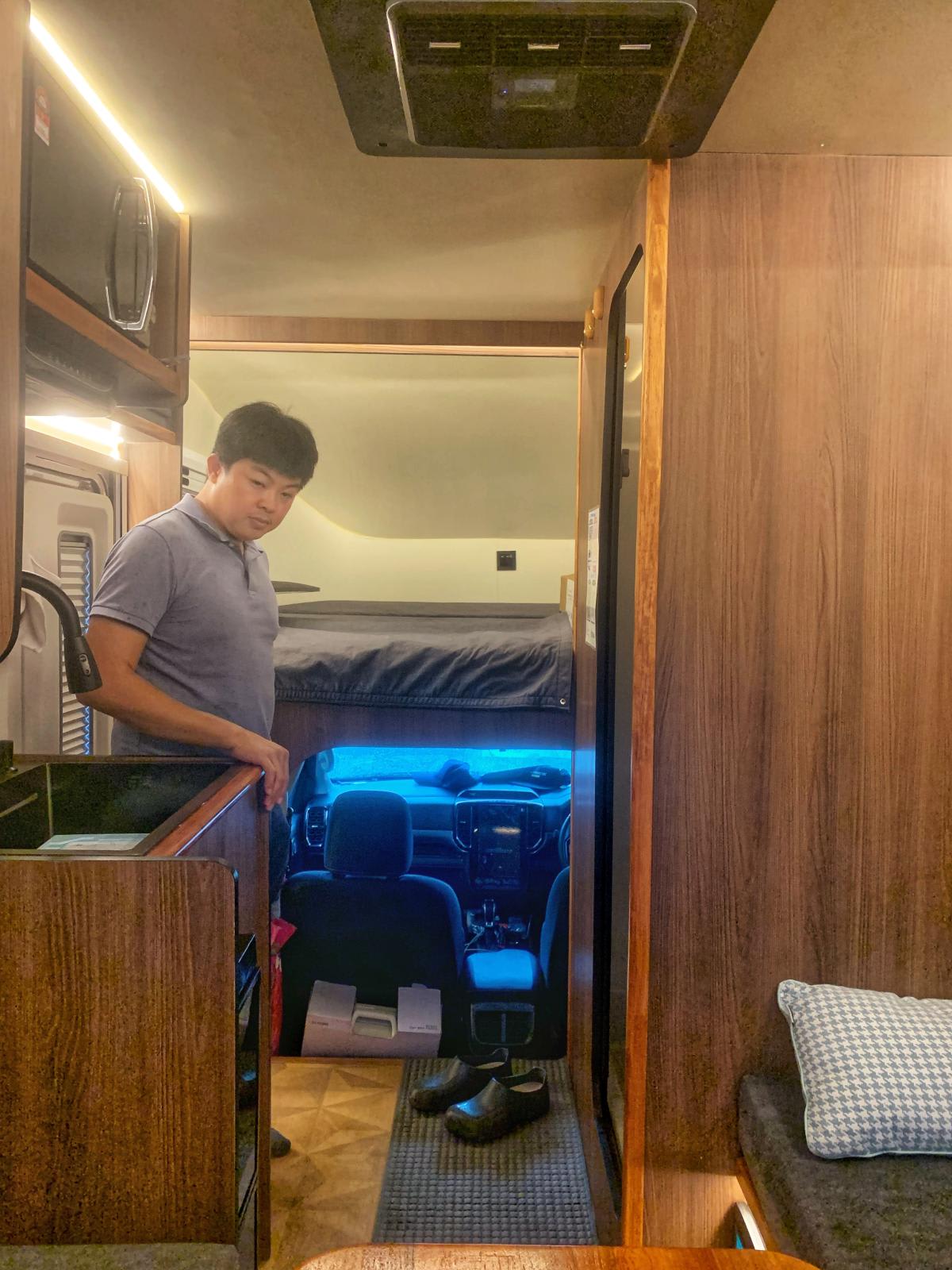
“That first RV post on Mudah.com got way more inquiries than any prior post,” said Tee, who estimated that he received 100 responses within a few weeks.
By 2021, VR Motorhomes started building their own proudly made-in-Malaysia RVs with locally manufactured fibreglass bodies mounted on repurposed Toyota Hilux trucks. Tee and company have since settled on a Ford pickup, their third iteration, with the aim of producing a minimum of 30 this year.
Besides selling their custom-built RVs, VR Motorhomes rents their campervans for around RM1,000 (S$302.89) for the first day, with subsequent days going for nearly half after discounts.
As you would expect, the industry is centred in the Klang Valley around Kuala Lumpur at the moment, with few RV dealers setting up shop further afield. Johor, for instance, has only one dealer based near Muar.
BROADER MOVES
This September, Melaka will host the Caravan Jamboree, timed to fall on this year’s World Tourism Day. State chief minister Datuk Seri Ab Rauf Yusoh said at January’s launch of Camper Rally Melaka 2025 that the event, co-organised with the Malaysian Campervan and Motorhome Association, will attract 155 delegations from around the world with plans for 1,000 campervans to converge at the city’s Dataran 1Malaysia square.
Meanwhile, foreign players have already joined the fray. In 2022, Europe’s leading RV manufacturer, Knaus Tabbert AG, was awarded Malaysia’s first Vehicle Type Approval certificate to start manufacturing, selling and distributing Outdoor Motor Vehicles (OMVs) in the country. That was soon followed by a visit to Malaysia, hosted by the East Coast Economic Region Development Council (ECERDC), of Knaus Tabbert and three other German RV makers, RV component manufacturers and a caravan trade fair organiser.
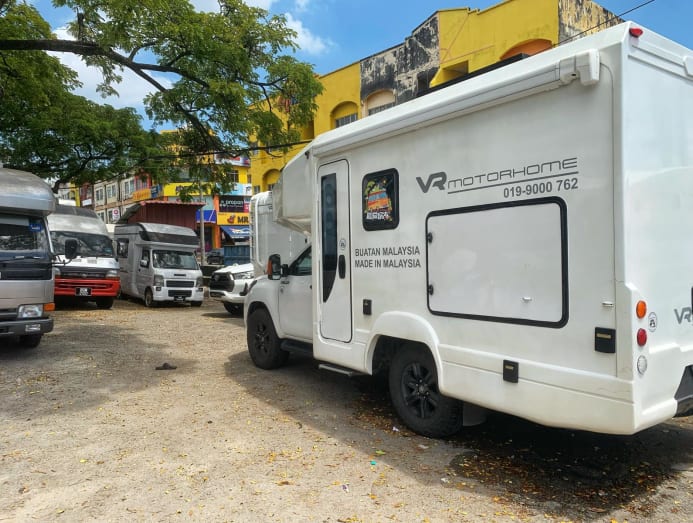
With growing public interest, Malaysian authorities are ramping up efforts to support the RV industry with infrastructure. Unlike in North America and Europe, where RVs have been on the roads for decades, Malaysia lacks a network of dedicated RV parks and campgrounds complete with electric, water and sewage hookups.
Fortunately, more modern campervans require much less such support, especially with roof-mounted solar panels now a standard de rigueur feature, and removable compact waste tanks that can be emptied in a lavatory. Many smaller caravans even forgo on-board WCs with users relying on public toilets.
Last year, the Department of Town and Country Planning (PLANMalaysia) took the lead in developing comprehensive guidelines for RV usage and addressing regulatory and infrastructure gaps, such as the lack of dedicated grounds for RV parking and camping. At present, such RV parks have been set up by individual states and cities such as Melaka.
THE LAST MILE
Parallel to the rising popularity of RVs is the growing “vanlife” community of more DIY-minded individuals inspired by counterparts in the United States, a group brought in focus by the 2021 Oscar-winning film Nomadland. Even a few young Singaporean couples have joined the new wave. COVID-19 cut short the endeavours of a number of more popular channels such as trailblazing 24 Hour Travellers, underlining the tenuousness of young communities and industries.
With the industry at a nascent stage and governmental guidelines still being firmed up, some interested consumers have reported frustration with certain dealers citing overcharging and lack of after-sales service. A few RV dealers/rental companies seemed wary of publicity beyond their own social media outreach.
It’s to be expected with new terrain being explored, as Ang and Toh are finding out themselves on a more literal note.
“One thing is that I didn’t realise that motorhomes aren’t that suited for steep mountain roads,” Ang recalled of their maiden RV trip in New Zealand. “There was a night when I wanted to reach a town before it got too late and took a shortcut. That was a bit scary, there was just enough horsepower to get us over some steep slopes.
“I think some drivers stuck behind us were a bit upset because we took our time, going slowly. That was a lesson.”



